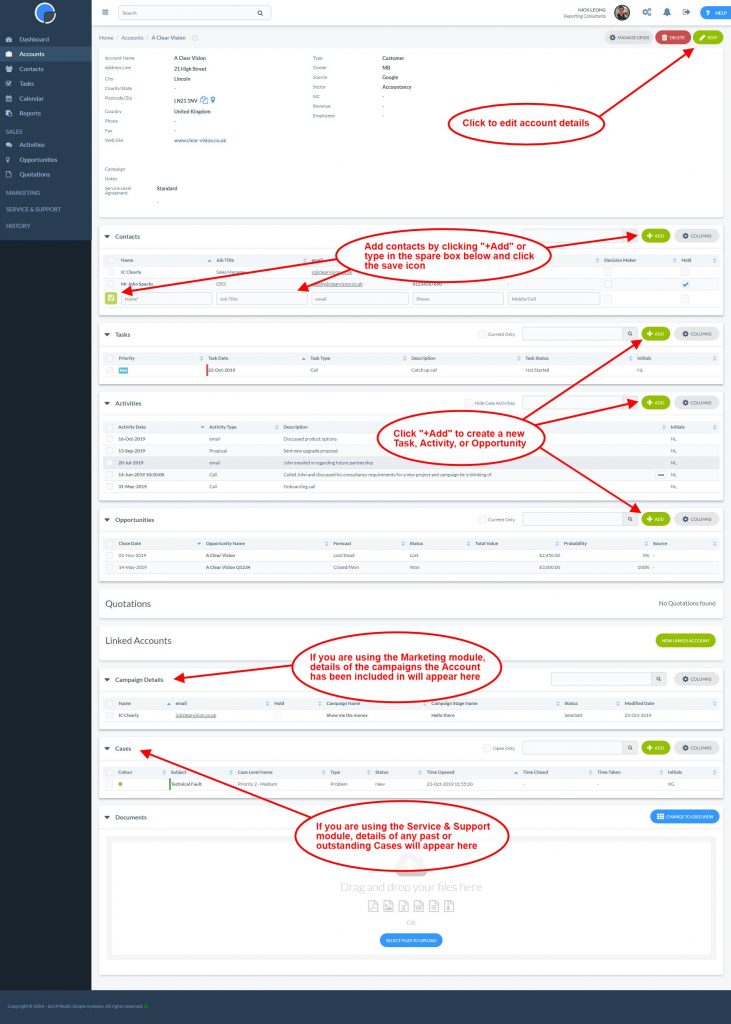Managing Accounts in your CRM
Your Accounts, or Company Accounts, are the fundamental data needed to use your CRM system. An Account is an organisation that you deal with and the quality of data you enter in Accounts will determine the success of your CRM.
You can either Add Accounts one by one or Import Data from an existing source.
You will need to ensure that your data is kept up to date and clean to get the most from your CRM. Here’s a blog about Making the most of your CRM that you might find useful.
Account Information
Your CRM system allows you to record a large amount of data about each of your Accounts and to specify the Account Type. Examples of Account Types might be customers, prospects, old customers, press contacts or anyone else you deal with. You can add your own custom fields to define the Account Types and to log data that is specific to your business, for example, warranty dates or model number.
All the data you add can be used for reporting and, if you are using the Marketing module, to segment your database for marketing campaigns.
Record Activities
When you meet with a customer, take a call, email or have any other communication, you can record the event under Activities. Keeping your Activities up to date means you have a record of when you have last been in touch with the customer, and what occurred. Both you and your colleagues can access the information from anywhere.
Adding an Activity has been made quick and easy, using dropdown menus, so you should be able to update the record in just a few seconds.
Set Tasks
You can use the CRM to set Tasks, “to do” actions for the future, for yourself and your colleagues. Again it is quick and easy to do and you can also set up and email notification of the Task. Each CRM User will have a Task list that they can access anywhere and update as they progress or complete the Task. When a Task is overdue it will show red in your Task list. when a Task has been completed it will auotmatically be added to Activities.
Add Opportunities
Opportunities are sales deals that you can add into your Accounts. Maybe you may have quoted a customer for a new order, so you would record the information in Opportunities and forecast the expected income and project the probability of success. This information will feed into your Sales Dashboard and build up your sales forecast sales for the current period.

